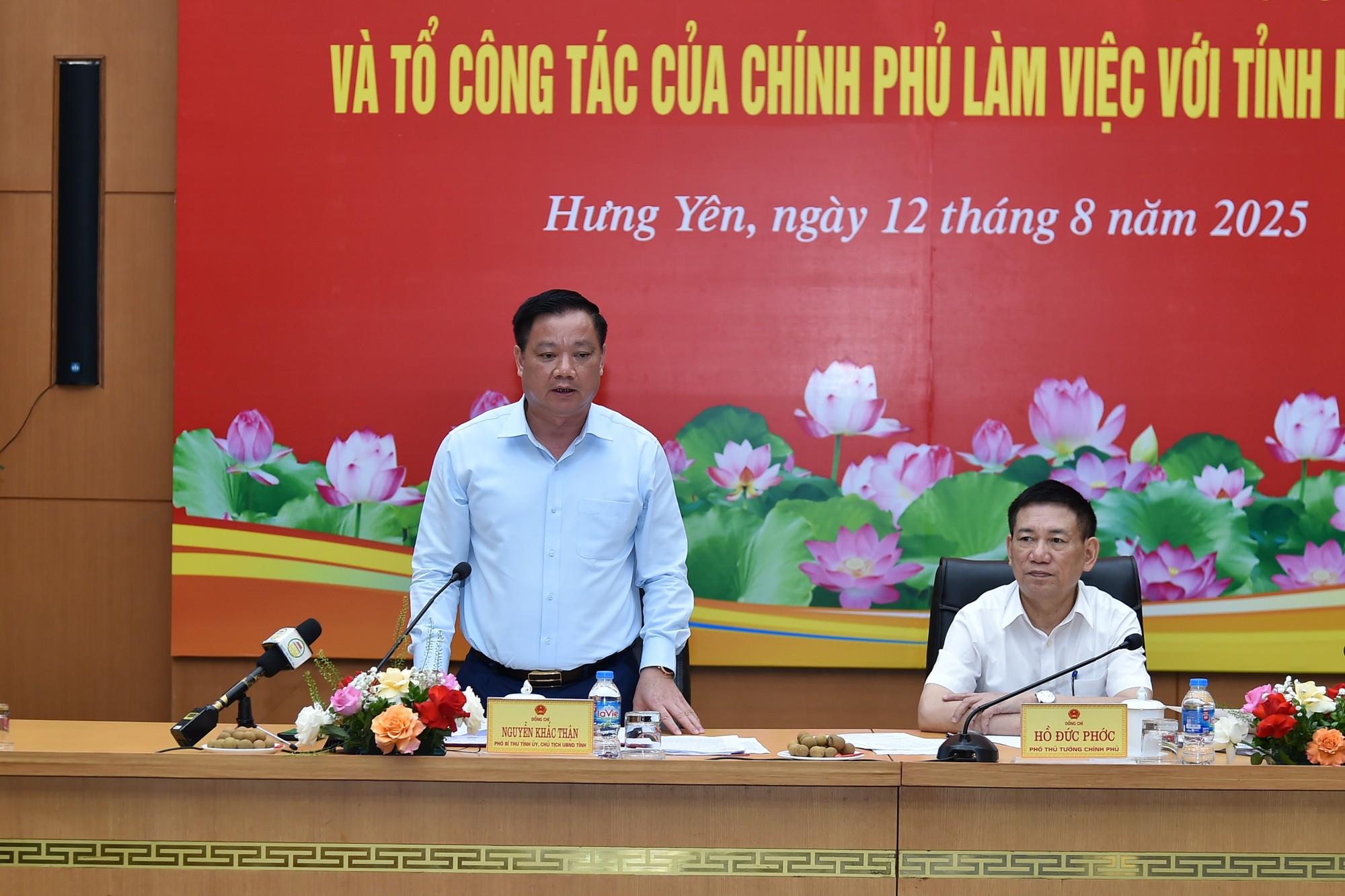Hung Yen province is working on a proposal to establish a free economic zone, according to a report presented on 12/8 at a meeting with Deputy Prime Minister Ho Duc Phoc, head of the Prime Minister's Task Force No. 5 on resolving bottlenecks and accelerating public investment disbursement. The proposed zone would be built on the site of the former Thai Binh economic zone.
The free economic zone aims to be a multi-sectoral, integrated model, focusing on high-tech industries, digital services, and high-quality services to create a dynamic ecosystem. It will operate under innovative policies to promote freedom in business, capital, talent, and governance, serving as a gateway for northern Vietnam to the world.
"Consultants and provincial authorities are developing the proposal's content and preparing procedures for submission to relevant authorities for review and feedback," Hung Yen province stated.
 |
Nguyen Khac Than, provincial Party Committee deputy secretary and chairman of the Hung Yen People's Committee, speaks at the meeting on 12/8. Photo: VGP |
Nguyen Khac Than, provincial Party Committee deputy secretary and chairman of the Hung Yen People's Committee, speaks at the meeting on 12/8. Photo: VGP
The proposal aligns with Prime Minister Pham Minh Chinh's conclusions from a previous meeting with leaders of the former Thai Binh province and fits Hung Yen's post-merger socioeconomic development strategy. The goal is to effectively leverage the region's potential and advantages, creating new growth momentum for the Red River Delta coastal area and the country.
A free economic zone (FEZ) is an area where the government applies special regulations and policies to attract international investment, trade, and services. FEZs typically offer tax incentives (corporate income, import-export, value-added tax), streamlined administrative procedures, specific regulations on goods, capital, and human resources, and integrated infrastructure (seaport, airport, logistics, industrial parks, and services).
Free economic and trade zones are relatively new models in Vietnam. Currently, there are two free trade zones in Da Nang and Hai Phong.
Concluding the meeting, Deputy Prime Minister Ho Duc Phoc asked Hung Yen to choose a modern FEZ model with appropriate mechanisms and policies for sustainable development.
Government leaders acknowledged Hung Yen's potential as a central hub in the northern delta. Its proximity to Hanoi, Hai Phong, and Bac Ninh provides convenient road, air, and seaport connections. The province also has significant potential for industrial, agricultural, commercial, logistical, and cultural tourism development.
"Hung Yen needs to develop a reasonable and rigorous plan, maximizing its potential for high-tech industrial and agricultural development, logistics, etc., for rapid and sustainable growth," the deputy prime minister said.
In the first half of this year, the province's GRDP is estimated to have increased by 8.11% compared to the same period in 2024. Export turnover in the first 7 months reached 7 billion USD, a 19.8% year-on-year increase. The province's export market spans over 100 countries and territories.
Hung Yen is actively seeking investment in various sectors, including industrial and infrastructure zones, industrial clusters, high-tech agriculture, commercial and logistics services, urban development, housing, transportation, and healthcare.
In the first 7 months, Hung Yen (post-merger) attracted over 6 billion USD in new and adjusted investment. The total number of active projects in the province is 3,891, comprising 3,000 domestic and 891 foreign direct investment (FDI) projects.
Phuong Dung












